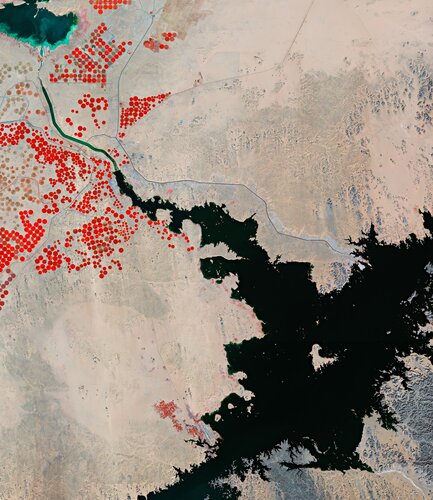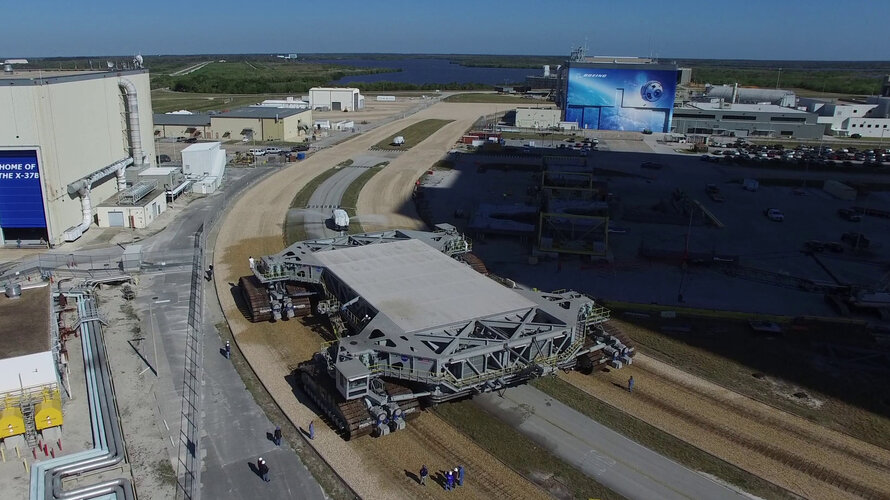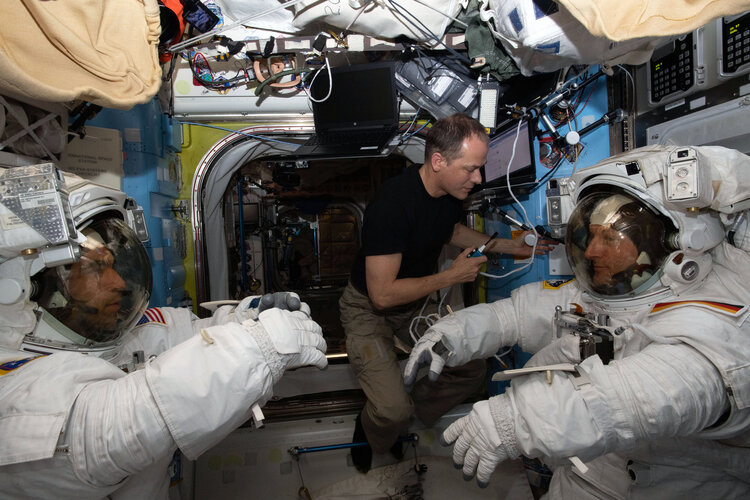
Copernical Team
Cupola Moon
 Image:
Image:
New picture, but a familiar face.
ESA astronaut Matthias Maurer took this image of Earth’s natural satellite, the subject of exciting news this week, from the seven-windowed cupola of the International Space Station.
Down on Earth, the rocket that will launch NASA’s Orion spacecraft with the European Service Module to the Moon has been moved to the launchpad in Florida, USA, for its first full test before the Artemis I launch later this year.
The Space Launch Systems rocket (SLS), aka the Moon rocket, left the Vehicle Assembly Building at NASA’s Kennedy Space Center at around 23:00 CET (22:00 GMT) on 17
NASA rolls out its mega Moon rocket
 NASA's massive new rocket began its first journey to a launchpad on Thursday ahead of a battery of tests that will clear it to blast off to the Moon this summer.
It left the Kennedy Space Center's Vehicle Assembly Building around 5:47 pm Eastern Time (2147 GMT) and began an 11-hour journey on a crawler-transporter to the hallowed Launch Complex 39B, four miles (6.5 kilometers) away.
Aro
NASA's massive new rocket began its first journey to a launchpad on Thursday ahead of a battery of tests that will clear it to blast off to the Moon this summer.
It left the Kennedy Space Center's Vehicle Assembly Building around 5:47 pm Eastern Time (2147 GMT) and began an 11-hour journey on a crawler-transporter to the hallowed Launch Complex 39B, four miles (6.5 kilometers) away.
Aro Earth from Space: Lake Nasser, Egypt

Part of Lake Nasser, one of the largest artificial lakes in the world, is featured in this false-colour image captured by the Copernicus Sentinel-2 mission.
Artemis: crawling towards launch
 Video:
00:08:04
Video:
00:08:04
One of the many milestones in the leadup to the launch of Artemis is its rollout: this is when a crawler will carry the SLS rocket with Orion and ESM from the Vehicle Assembly Building to launchpad 39B. NASA’s John Giles gives us a tour of the crawler and explains the adaptations made to this “wonderful piece of machinery” since it was first built for the Apollo programme in the 1960s. ESA is playing a key role in NASA’s Artemis programme, which will bring astronauts back to the Moon. The European Service Module – or ESM –
First spacewalk for Matthias Maurer

ESA astronaut Matthias Maurer is scheduled to perform his first spacewalk next week, stepping outside the International Space Station on Wednesday 23 March alongside NASA’s Raja Chari.
Pete Davidson skipping ride to space on Jeff Bezos rocket

Remote sensing satellite lifted successfully into orbit
 China launched a remote sensing satellite from the Jiuquan Satellite Launch Center in the northwestern Gobi Desert on Thursday afternoon, according to the China Aerospace Science and Technology Corp.
The State-owned space contractor said that the Yaogan 34-02 satellite was placed in a preset orbit aboard a Long March 4C rocket that lifted off at 3:09 pm.
The satellite will team up wi
China launched a remote sensing satellite from the Jiuquan Satellite Launch Center in the northwestern Gobi Desert on Thursday afternoon, according to the China Aerospace Science and Technology Corp.
The State-owned space contractor said that the Yaogan 34-02 satellite was placed in a preset orbit aboard a Long March 4C rocket that lifted off at 3:09 pm.
The satellite will team up wi Moon's orbit proposed as a gravitational wave detector
 Researchers from the UAB, IFAE and University College London propose using the variations in distance between the Earth and the Moon, which can be measured with a precision of less than a centimeter, as a new gravitational wave detector within a frequency range that current devices cannot detect. The research, which could pave the way for the detection of signals from the early universe, was pub
Researchers from the UAB, IFAE and University College London propose using the variations in distance between the Earth and the Moon, which can be measured with a precision of less than a centimeter, as a new gravitational wave detector within a frequency range that current devices cannot detect. The research, which could pave the way for the detection of signals from the early universe, was pub OneWeb partners with Axiros for critical customer infrastructure support
 When the nearest service engineer is a 2-hour helicopter flight away, manual troubleshooting and firmware updates really aren't an option. So who does OneWeb trust for remote management of their user terminals? Axiros.
As if it wasn't demanding enough managing your core network components out in space, there are also extreme on-the-ground challenges for a satellite operator like OneWeb. Th
When the nearest service engineer is a 2-hour helicopter flight away, manual troubleshooting and firmware updates really aren't an option. So who does OneWeb trust for remote management of their user terminals? Axiros.
As if it wasn't demanding enough managing your core network components out in space, there are also extreme on-the-ground challenges for a satellite operator like OneWeb. Th New microscopic organisms found in deep sea trench baffle Chile scientists
 When Chilean scientist Osvaldo Ulloa led an expedition 8,000 meters under the sea to an area where no human had ever been, his team discovered microscopic organisms that generated more questions than answers.
The January submarine expedition dove into the Atacama Trench, created by the meeting of two tectonic plates in the eastern Pacific Ocean.
"We pulled off the feat of taking humans i
When Chilean scientist Osvaldo Ulloa led an expedition 8,000 meters under the sea to an area where no human had ever been, his team discovered microscopic organisms that generated more questions than answers.
The January submarine expedition dove into the Atacama Trench, created by the meeting of two tectonic plates in the eastern Pacific Ocean.
"We pulled off the feat of taking humans i 
